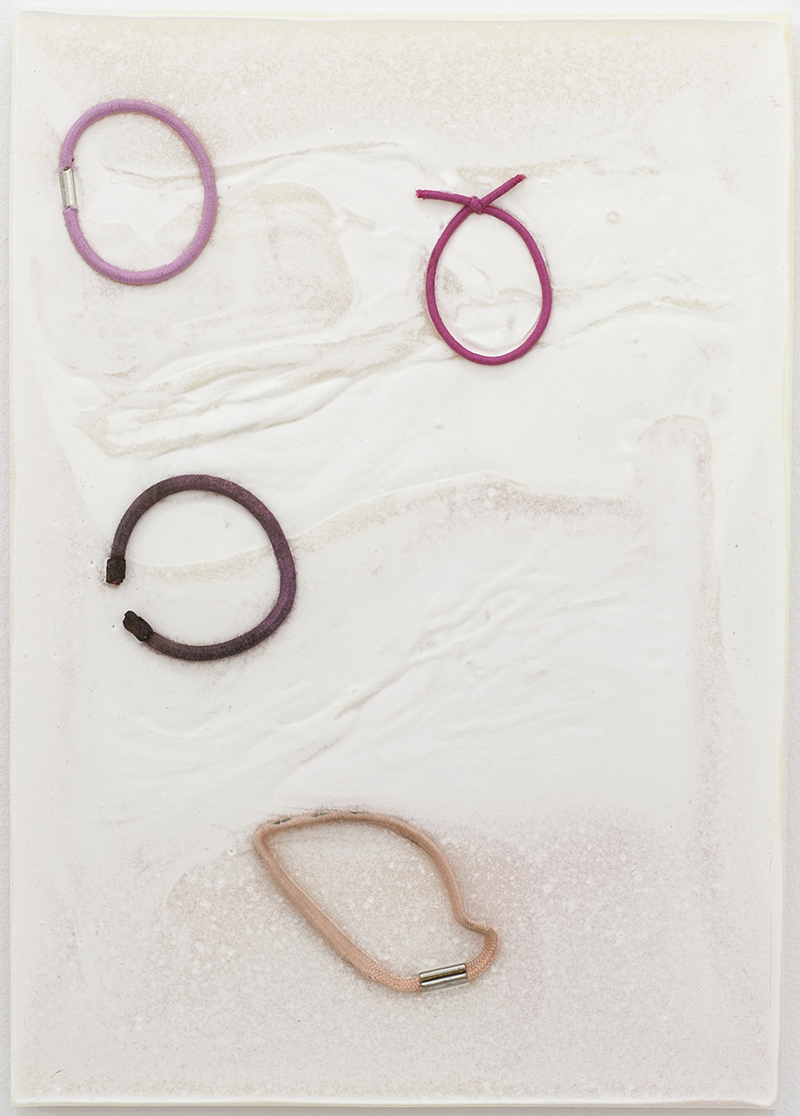 "Bodybuildings" (2015) © Jessica Pooch
"Bodybuildings" (2015) © Jessica Pooch
There is something utterly repelling about having to touch a lost and found hair tie. Old unwashed hair, maybe even a smell, dirty fingers – an object that opposes hygiene on so many levels. The collection of found hair ties began in Berlin during an artist residency at Air Berlin Alexanderplatz – located in one of those grey and dull high-rise buildings – the place where I first met the Zurich-based, German artist Jessica Pooch. Her art touches human instincts: feelings of shame and disgust, of togetherness and intimacy versus publicity. The language of her work – sleek and disturbing at the same time – speaks a formal vocabulary often very close to the aesthetics of design, while it questions basic functions and values that objects and materials are supposed to fulfil or suggest. Public toilets, piercings, artificial fingernails, grab poles are materials that she functions as performative tools, subtly pointing at the viewers' own anticipation of what these materials might stand for and how they make them feel. In our interview Jessica told me what it is that interests her about the concept of intimacy and how she plays with it on many different levels in her art.
Anna-Lena Werner: Jessica, your practice embraces installations and sculptures, often using industrial and interior design elements for the formal layout of your works, while withdrawing the design’s original function. What role does design play in your work?
Jessica Pooch: We busy ourselves with objects and use them because they have certain functions. They embody intentions that humans have placed in them. That’s the aspect of design that I’m interested in. The purpose inherent to the objects and ideational value judgements that go with it; the strategies and ideologies with which we interact on a daily basis.
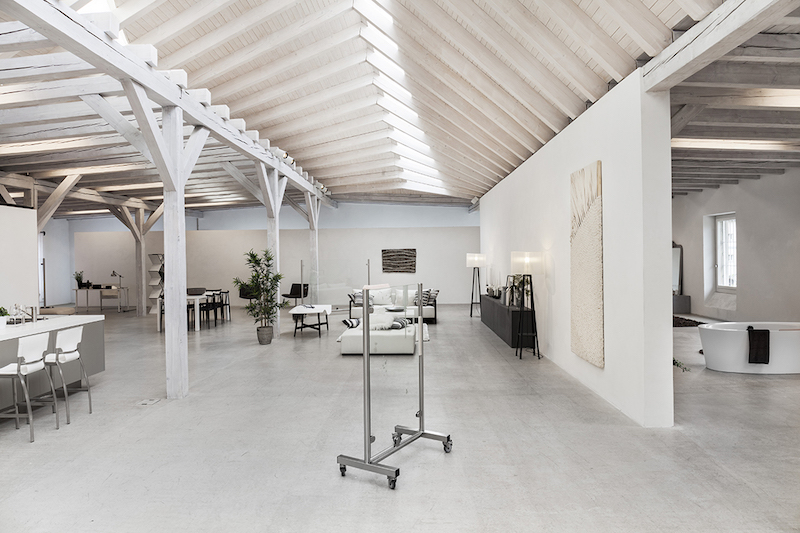
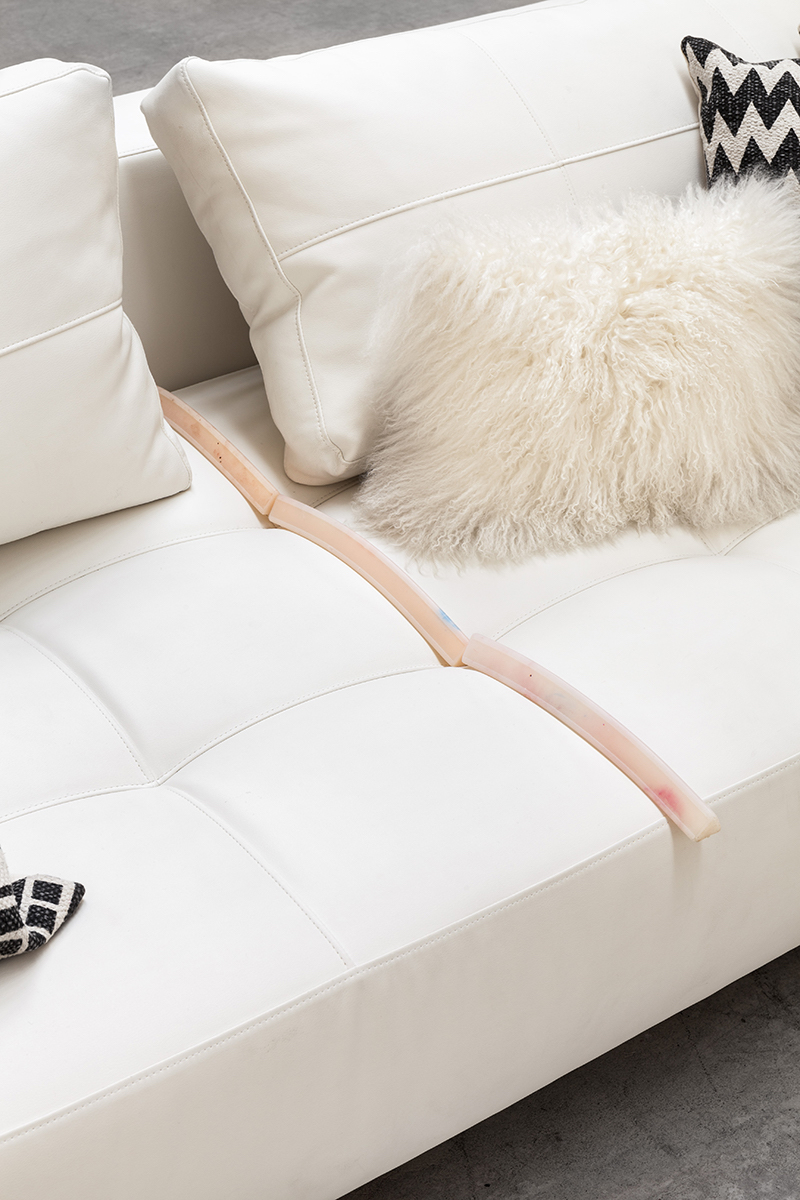 "Home Staging" © Jessica Pooch and Roman Gysin
"Home Staging" © Jessica Pooch and Roman Gysin
ALW: “Home Staging”, a recent collaborative project of yours, seems to reveal interior design as a stage – a constructed sensation of homeliness or cosiness, suggested by supposedly beautiful objects being placed by an agency inside homes that are for sale. Can you tell me more about this project?
JP: The initial visit to Rapperswil, observing the museum and the impression of a spacious loft as an exhibition venue were key factors for arriving at the theme of interior design and then deciding to make use of the service of a home stager. Previously, I had mainly reflected on public space and engaged with its infrastructure. On a conceptional level, home staging conceives a depersonalized space, similar to public space, that is emptied of individuality and human traces, so that as many people as possible can relate to it. The method of home staging promises to evoke positive feelings based on “harmonious, neutral interior design” and thus to accelerate the sale of the real estate and achieve higher profits.
Artworks were integrated in this staging: "Separatistinnen" (silicone casts of checkout dividers) and "Windprotektoren" (moveable glass panels treated with etching liquid) that had been created based on the engagement with the relation between human bodies and objects, and raised questions related to concepts such as artificial/natural. Roman Gysin, who works with decorative materials that he turns into sculptural wall objects – a close friend and artist who I invited to collaborate – fell back on existing works and pursued an assessment of authenticity in this context characterised by trinkets, mock-ups and decoration. A key interest in regard to the show was a democratic handling of things, meaning to treat everything in the same way, which ultimately amounts to a kind of levelling. The combination of art, decoration and design to create an installation, or rather the placement of works in this ensemble of fixtures determined by outer appearance, was quite irritating. The differentiation and classification of certain concepts were undermined, something that provided quite a bit of friction and had a disturbing and creepy effect.
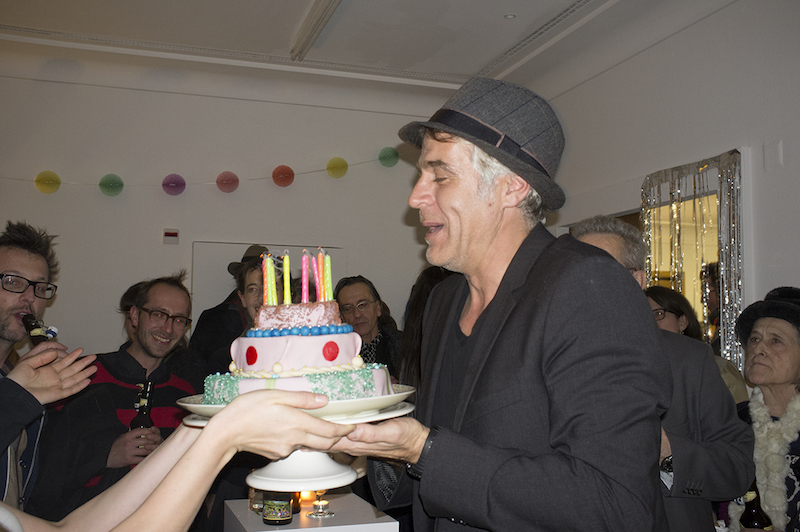 “Peters Geburtstag” (2014) © Jessica Pooch
“Peters Geburtstag” (2014) © Jessica Pooch
 “Peters Geburtstag” (2014) © Jessica Pooch
“Peters Geburtstag” (2014) © Jessica Pooch
ALW: For the performative event “Peters Geburtstag” (2014), you invited a stranger to celebrate his birthday during the opening of your exhibition inside the Helmhaus Zurich and subsequently exhibited the remains from the party that you equipped for him. Here, and in many other works of yours, you merge and displace private and public rites with each other. I would be interested to know what interests you about the concept of privacy?
JP: I find the separation – and the merging – of private and public life an interesting starting point to think about personal and social relationships and how they are regulated. When I invited Peter to jointly plan his birthday and celebrate it in the Helmhaus Zurich, it was mainly about searching for and finding a person unknown to me by applying the criteria of a date of birth and the person’s idea of a birthday party. Chance and the unforeseeable were important factors, because if it hadn’t been Peter, the celebration and the preparations would certainly have turned out in an entirely different way. I was fascinated by Peter’s generosity to welcome the visitors of the exhibition opening to his birthday party, and that is why it was a pleasure for me to support him. When I exhibit the birthday presents of a person I don’t know, I am at first interested in the social rite and the conventions that go along with it. The presentation of gifts, the compilation of a playlist, the decoration and documentation of a celebration – and less the exposure of Peter’s private life or the making public of his individual taste.

 “Your Structure is my Skin” (2015) © Jessica Pooch
“Your Structure is my Skin” (2015) © Jessica Pooch
ALW: The concept of privacy is, for example, central to your installation “Your Structure is my Skin” (2015), which simulates cabins of a public toilet. The work is accessible, but instead of singular enclosed toilet cabins, the exhibition visitors find themselves inside an open, clean white cube. How did this work evolve?
JP: Instead of white cube, one would have to say “nude cube”, because the colour of the walls was not a shade of white but a tone resembling the colour of my skin. I collaborated with a manufacturer of toilet cabins for this work, making a selection from various models and rendering the cabin with a floor plan deemed “atypical” by the manufacturer. It wasn’t that easy to find a firm to produce it. My research initially focused on the human, on his or her way of dealing with nature’s call and other usages of toilet cabins also associated with shame. During this process, the toilet cabin itself came to be in the foreground, its standardisation in terms of material, colour and shape. In the end, after putting myself in the position of the object/spatial structure, I arrived at a structure that resisted its primary purpose of isolation, eluded its usability for defecation, proved to be resistant and appeared to rise above its competences.
ALW: Small, cylinder-shaped aluminium spikes are attached in the interior walls of the cabin cube. In the installation “Rite of Passage” (2016) you installed similar spikes and other steel objects to a wall, imitating the shape of different body piercings. The white walls act as the skin, again reminding one of certain interior design trends such as wall tattoos. Why does the surface of the wall, here, serve as a symbol for human skin?
JP: I think it is above all the feeling of intimacy and distance in relation to the object and a need to acknowledge its reality and autonomy that prompted me to take this approach.
 "BB,CBB" in the exhibition "Rites of Passage" © Jessica Pooch
"BB,CBB" in the exhibition "Rites of Passage" © Jessica Pooch
 "BB,CBB" in the exhibition "Rites of Passage" © Jessica Pooch
"BB,CBB" in the exhibition "Rites of Passage" © Jessica Pooch
ALW: Like in “Rite of Passage”, the joining of clean design and insanitary symbolism is very much inherent to your various works with different sorts of grab poles presented as sculptural objects. However, people must have very different associations and feelings about touching public grab pole, or a public door handle. What kind of reactions do you get from exhibition visitors?
JP: One of my students said that my work is at the same time both cool and intimate. In a press text, Otto Bonnen first speaks of humour. The reactions certainly differ greatly. I appreciate – and that is something that visitors often mention – that alongside its sculptural or spatial character, my work also functions in a performative/situational way and plays with forms of encounter.
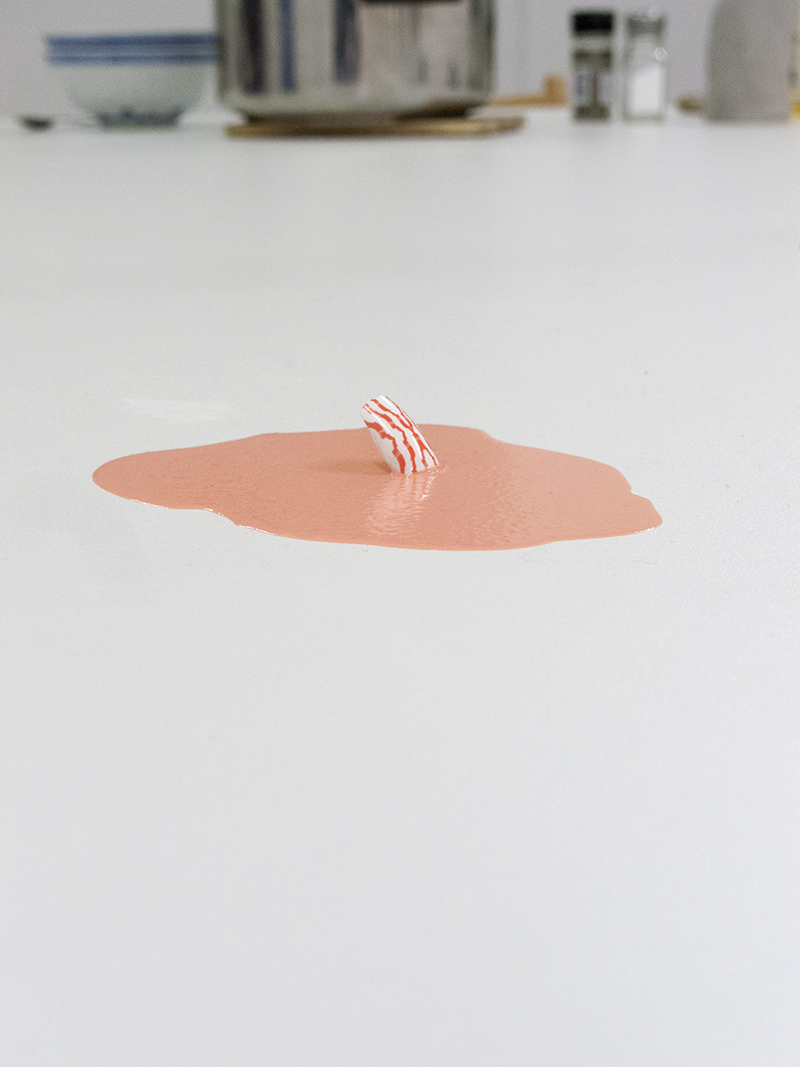 “Drifting,” 2014 © Jessica Pooch
“Drifting,” 2014 © Jessica Pooch
ALW: The grab poles and the toilet installation address a very intimate reaction: disgust. This feeling plays a key role in the choice of many materials and forms that you use, such as artificial fingernails (“Drifting,” 2014) or found hair ties ("Bodybuildings", 2015). What is it about this human instinct that interests you?
JP: The fundament of disgust is innate in all humans, but the reaction to disgust as such is acquired. I find it interesting to observe that things inducing disgust change over time and increase the higher the degree of civilization is. For example, a modern-day feeling of disgust is triggered by warmed up seats, something that has only little to do with protection against the risk of infection. I was inspired to collect hair ties by a “disgusting figure”, if you like, who wore loads of hair ties around her crutches. I was interested in their potential as a projection screen, collected them for several months and then combined them to form comic-like figures with eyes, nose and mouth. I liked the idea of blending different identities that appeared to be affixed to the hair ties. As a support material I chose soap that I made out of oils/fats and sodium hydroxide.
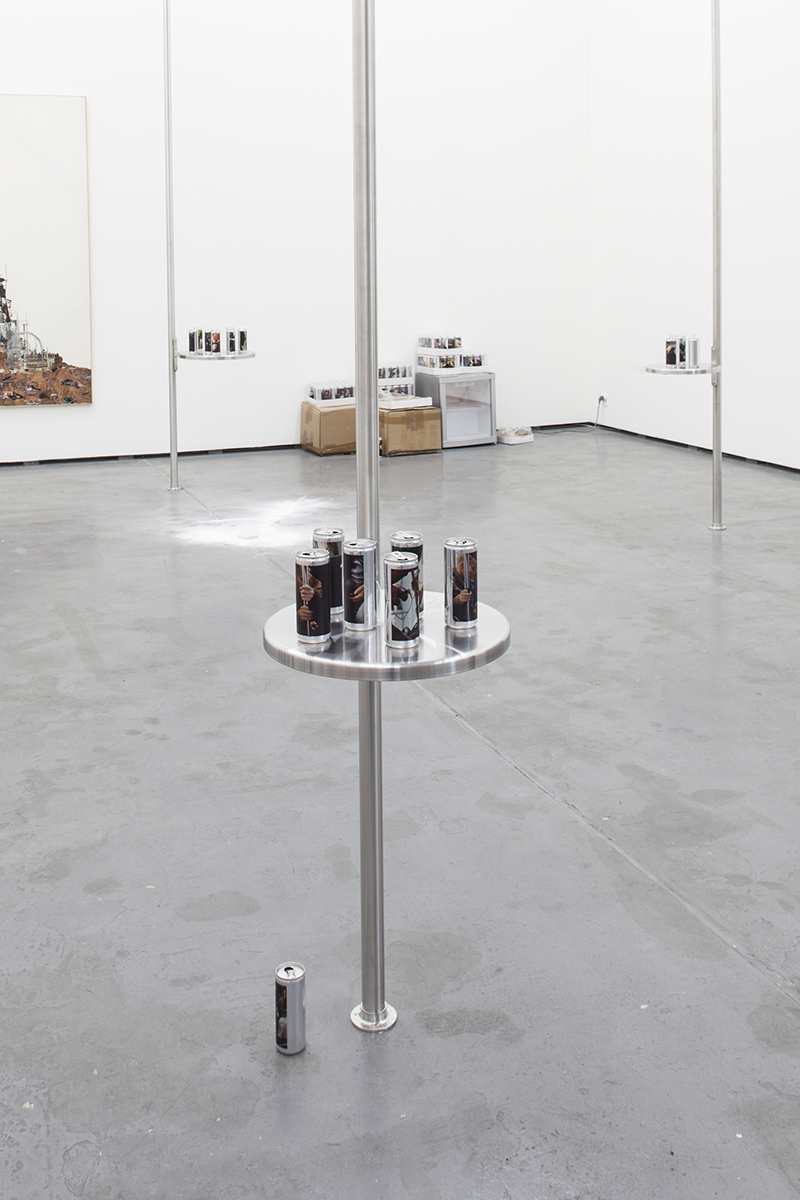 “Do you feel the energy?” (2014) © Jessica Pooch
“Do you feel the energy?” (2014) © Jessica Pooch
ALW: Like in “Peters Geburtstag”, the work “Do you feel the energy?” (2014) shows the remains of a social gathering, in which you invited people to drink energy drinks. As opposed to your neat sculptural work, these performative events always incorporate an unforeseeable, perhaps a chaotic outcome. Although it seems extremely oppositional to your practice, can you make this sort of provoked chaos productive for yourself?
JP: To highlight the chaos within certain orders and their potential of volatility belongs to my practice, no matter which genre I choose. George Perec once formulated this quite aptly in relation to literary work. In “Statement of Intent”, he compares himself to a farmer with many fields. These fields, he writes, and that’s also how I feel about it, belong to different modes of questioning. They perhaps address the same problem, but approach it each time from a different perspective.
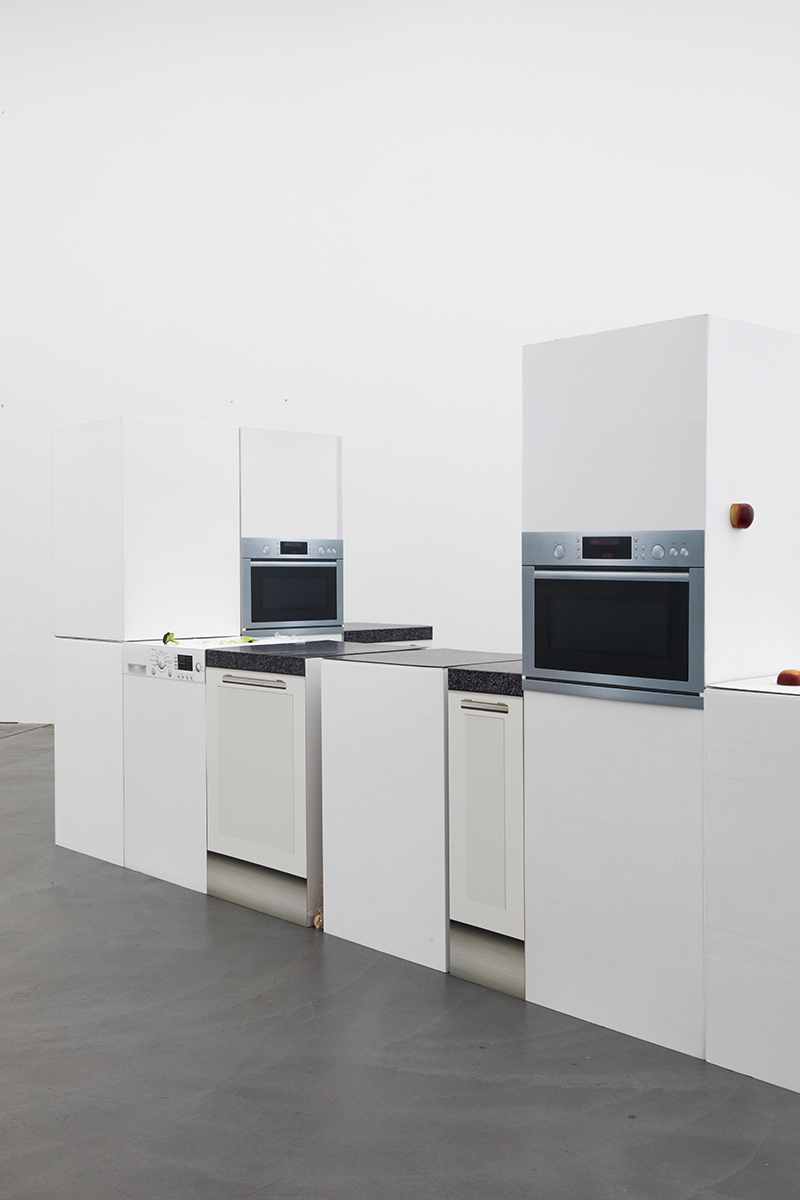
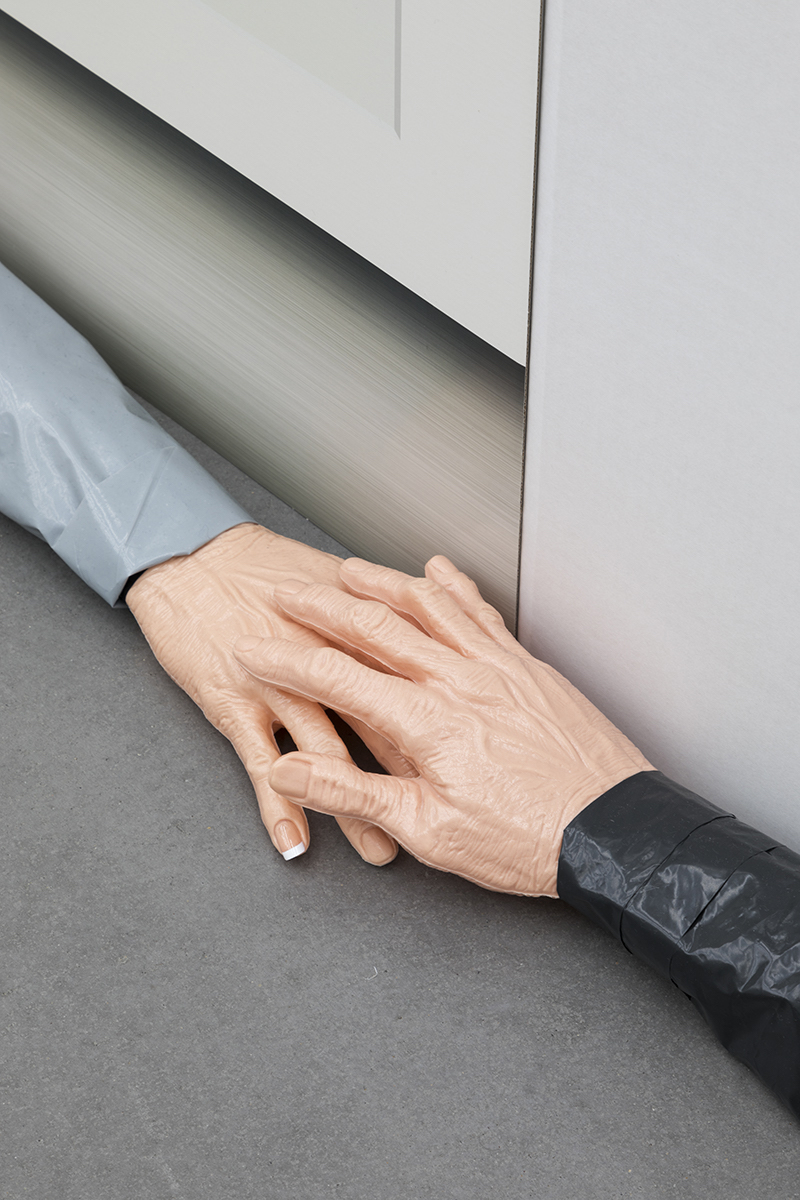 "Dude dude damm di di, dudli du, damm damm damm" (2017) © Jessica Pooch, COURTESY Jessica Pooch & Åplus
"Dude dude damm di di, dudli du, damm damm damm" (2017) © Jessica Pooch, COURTESY Jessica Pooch & Åplus www.jessicapooch.com
www.åplus.de
